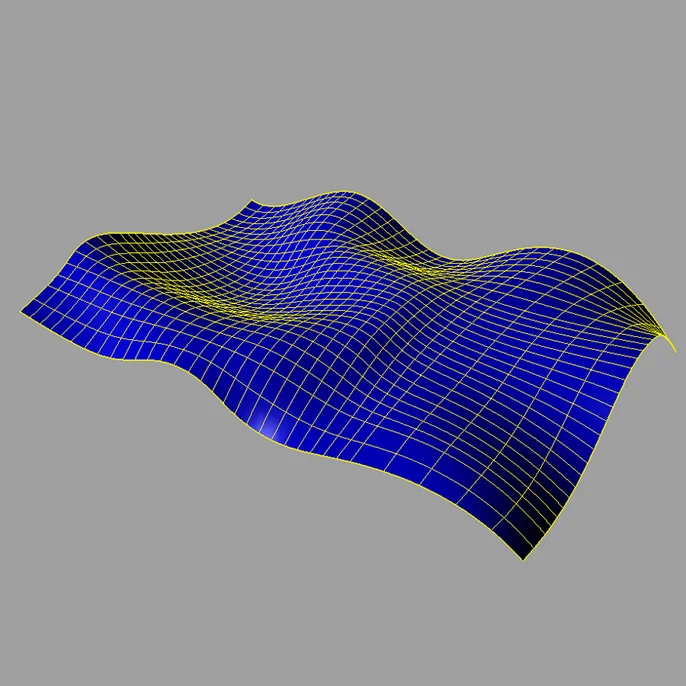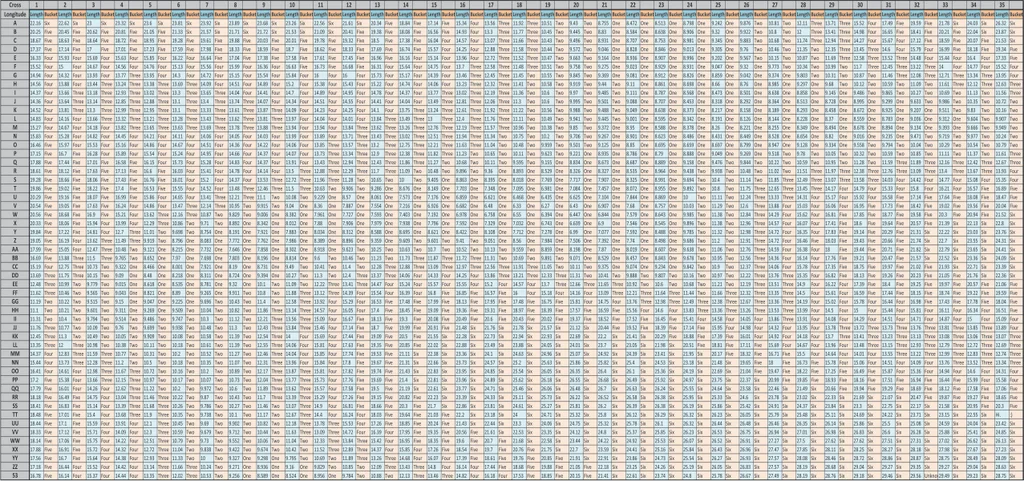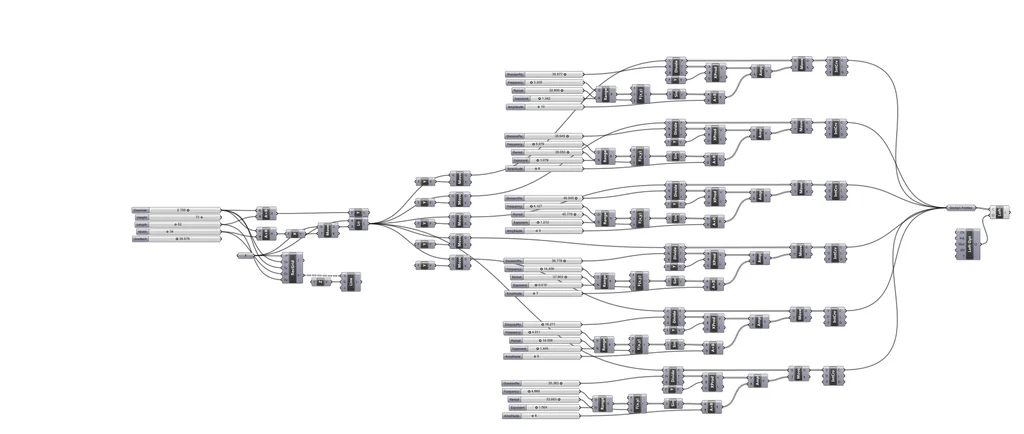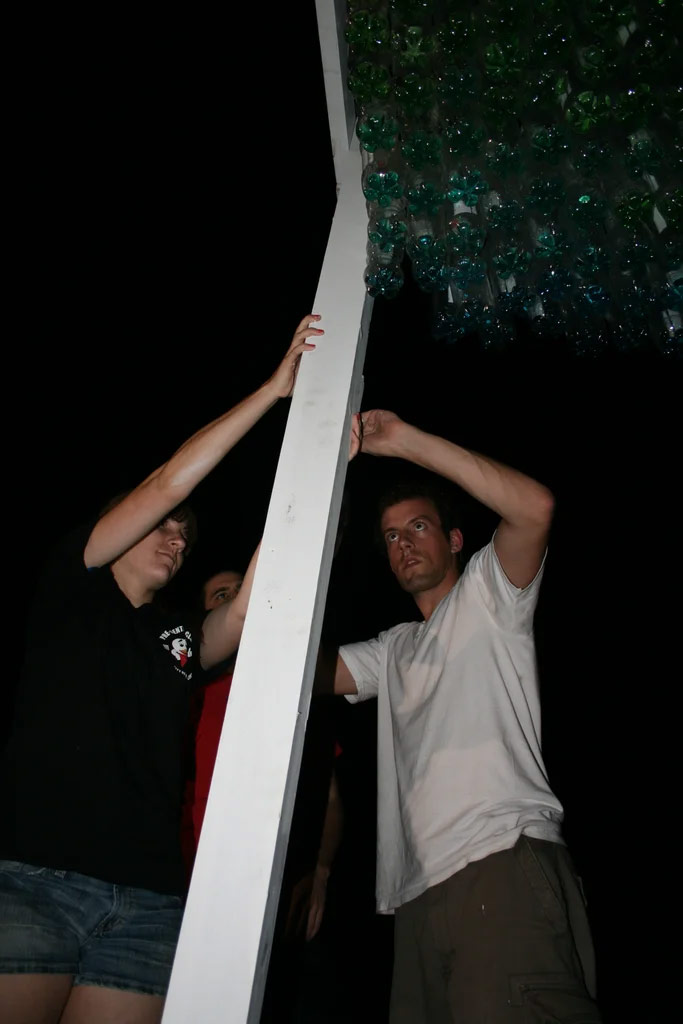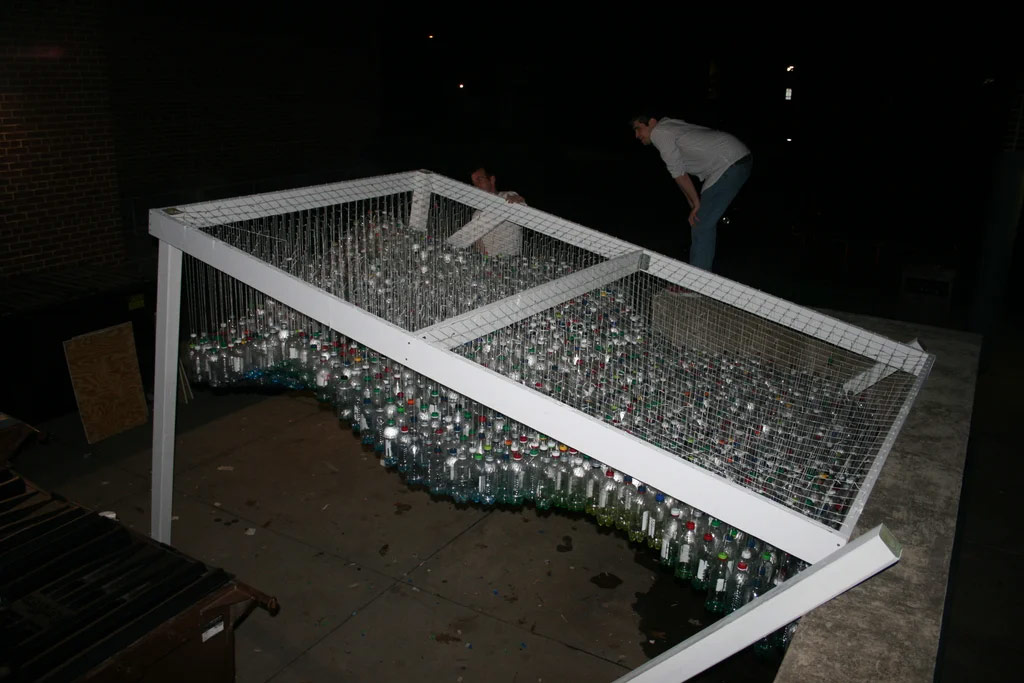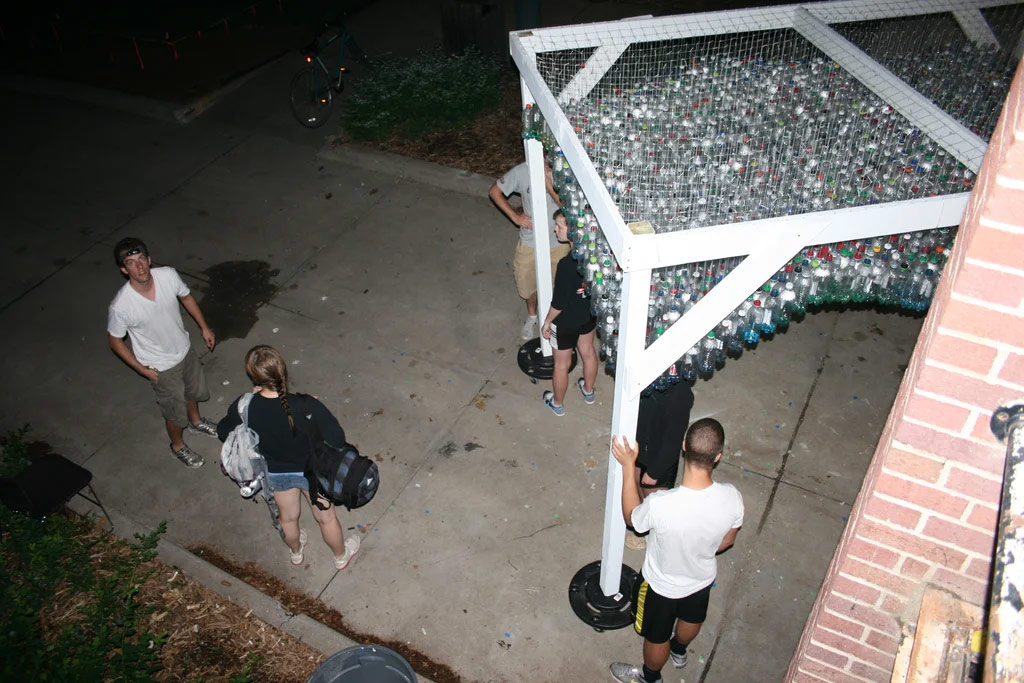(POP)culture
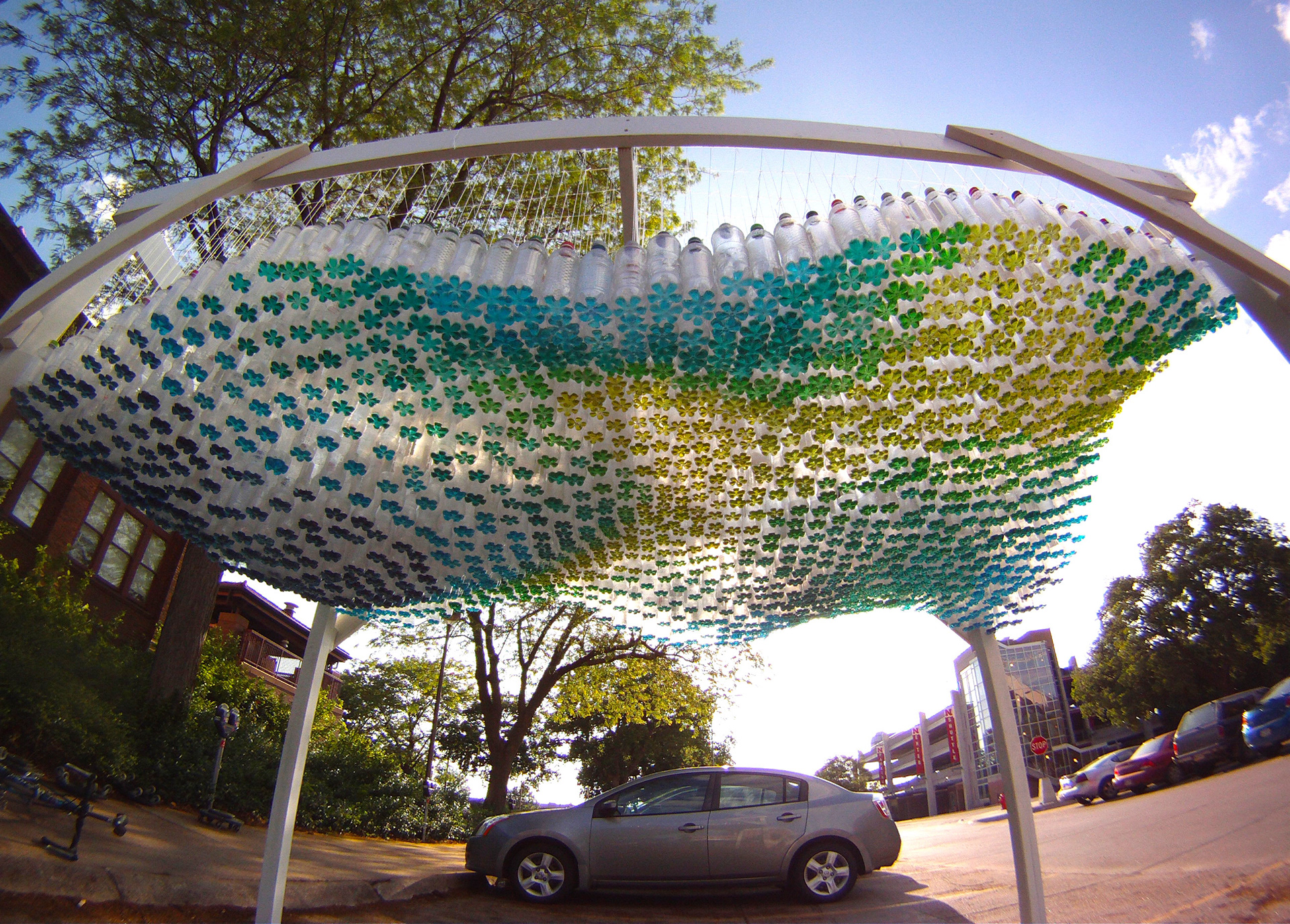
This installation was designed to occupy a parking spot for an international annual event called PARK(ing) Day. The fabrication involved 26 people and over 300 hours of work. This project sought to challenge the way in which we inhabit urban contexts. (POP)culture questions the behavior that plagues those locked in a high speed lifestyle insensible to the ramifications of their actions. Using only recycled materials, (POP)culture is an oasis within the noisy context of urban infrastructure. Defined by the ubiquitous paint stripes that frame our means of transportation, this project temporarily re-imagines a parking space as a park. One thousand five hundred and eighty one 20 ounce soda bottles create a canopy under which discussions of urban density, sustainability, and consumerism transpire.

The deliberate positioning of the bottom surface of the bottles encourages intimate encounters with the bottles. At eye level, the undulating surface of the bottles suggests an endless landscape of beautifully colored waste. A bottle, when placed among thousands of copies, articulates the magnitude of contemporary consumptive lifestyles.
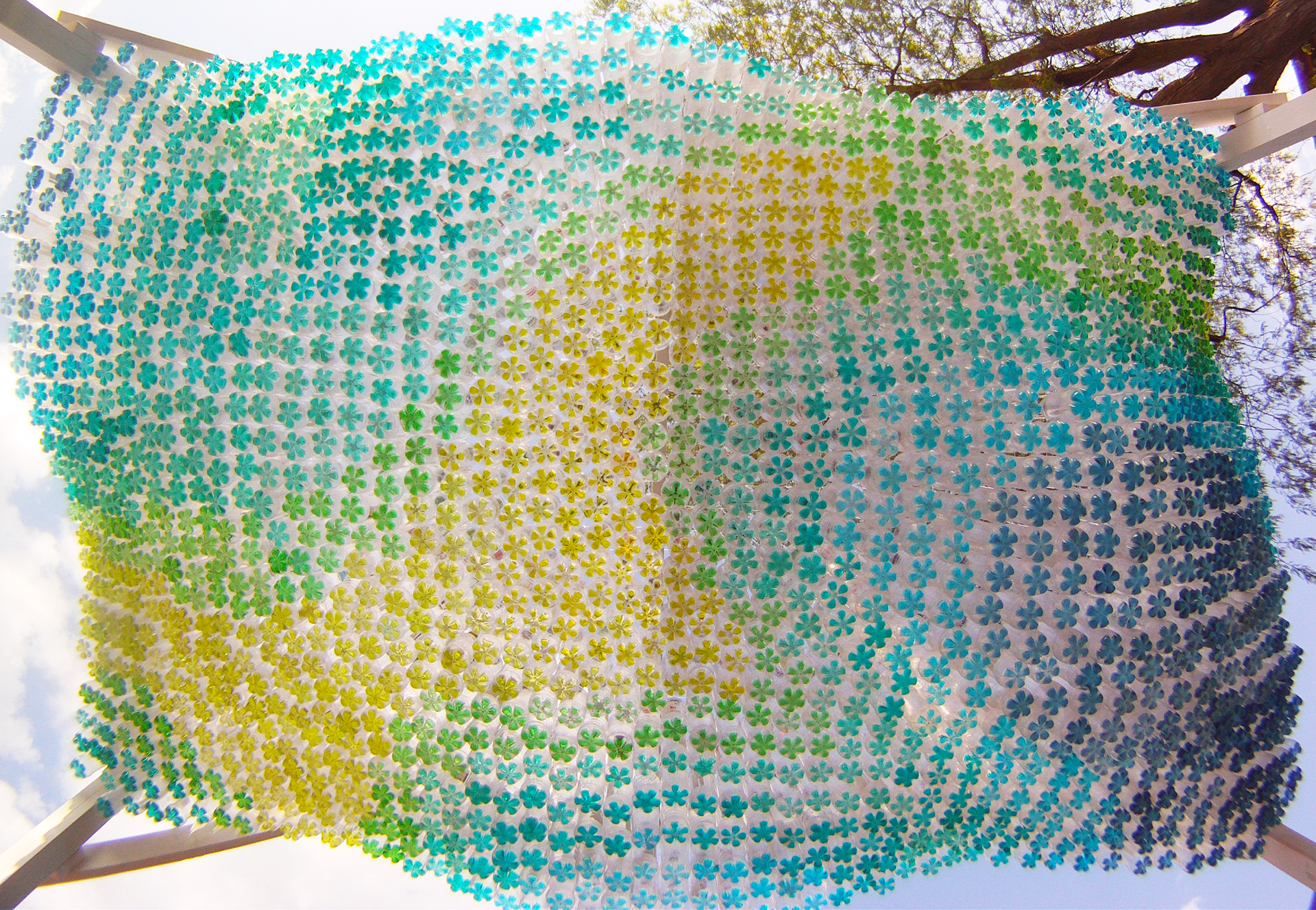
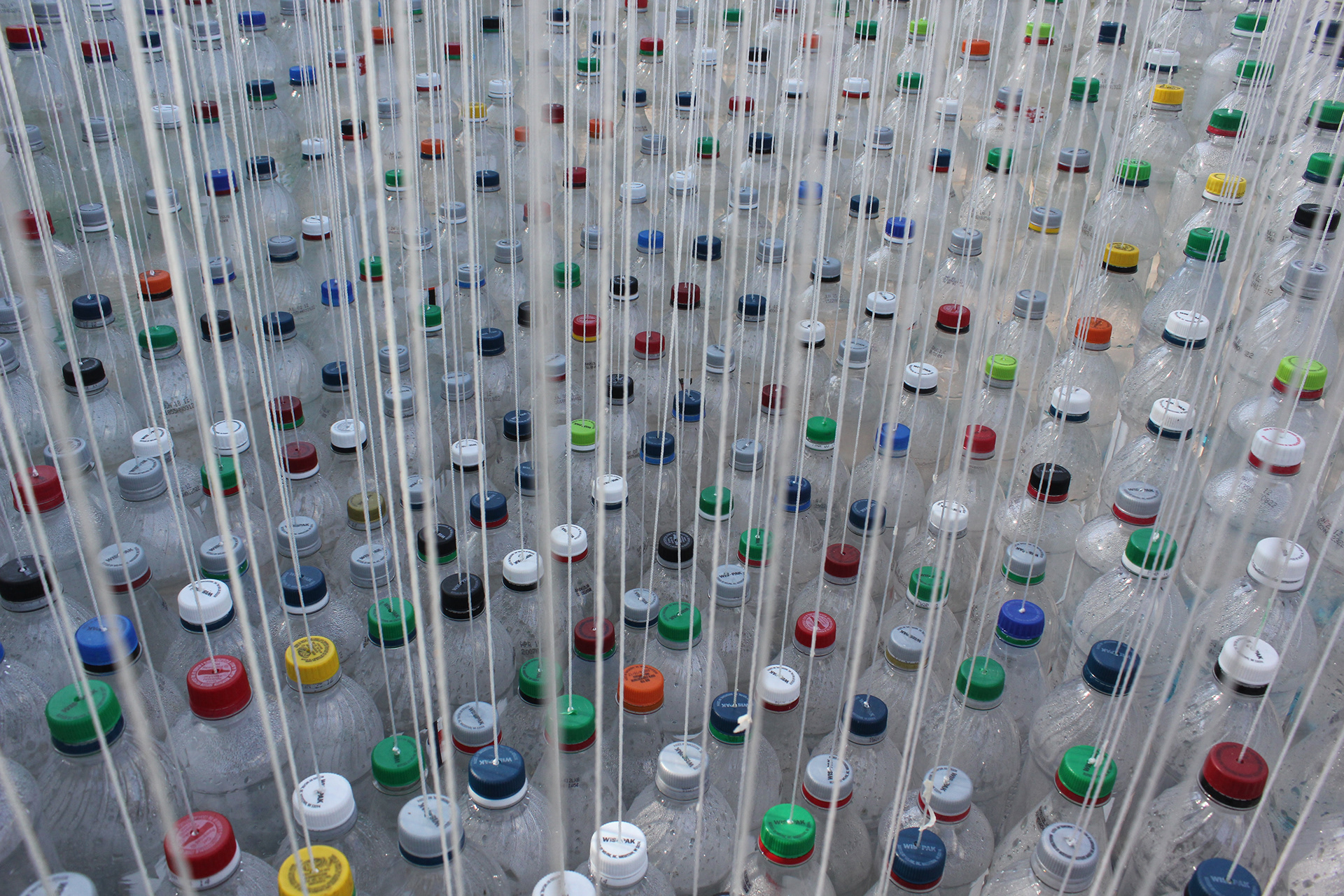
This project used 1,581 recycled soda bottles to create a canopy for shading from the sun. The project incorporated 3D modeling and scripting software to generate the desired surface created by the bottom of the soda bottles. The project sought to stimulate creative alternatives for recycling and reusing materials.
Each bottle is filled with a small amount of colored water. The specific color of the water is based on the elevation of the bottle relative to the groundplane. Each bottle is hung from a grid by a unique string length ranging from 6″ to 30″.
Basic Materials:
1,581 soda bottles
washers
masons line 1000+ yards
hot glue
masking tape
wood 4×4 and 2×6
wood screws
brackets
food coloring
water
outdoor paint
basic tools
many volunteers!!
I used Rhinoceros, a 3D modeling program to create the surface that the bottom of the bottles form. From this form, we used Grasshopper (a scripting program) to generate a dataset containing the length of each string corresponding to a coordinate grid system. For simplicity, we label one direction of the coordinate using numbers, and the second direction using letters. The dataset, in addition to providing the location of the string, provided the color of liquid in each bottle that would hang from each string.
Step 2: Cutting String

For this step, over 20 people volunteered their time throughout about 3 weeks working to prepare each individual string to hang each bottle. Each string was labeled and cut to a specific length per the length denoted by the table. A washer was tied to one end of the string so a bottle cap with a hole drilled in it could be hung from the string. This step takes many hours and is rather tedious. Each individual was given 51 string lengths to cut in one sitting (the number of bottles in one column of the structure). Doing it with other people makes this step in the process much more enjoyable.
Step 3: Bottle Preparation
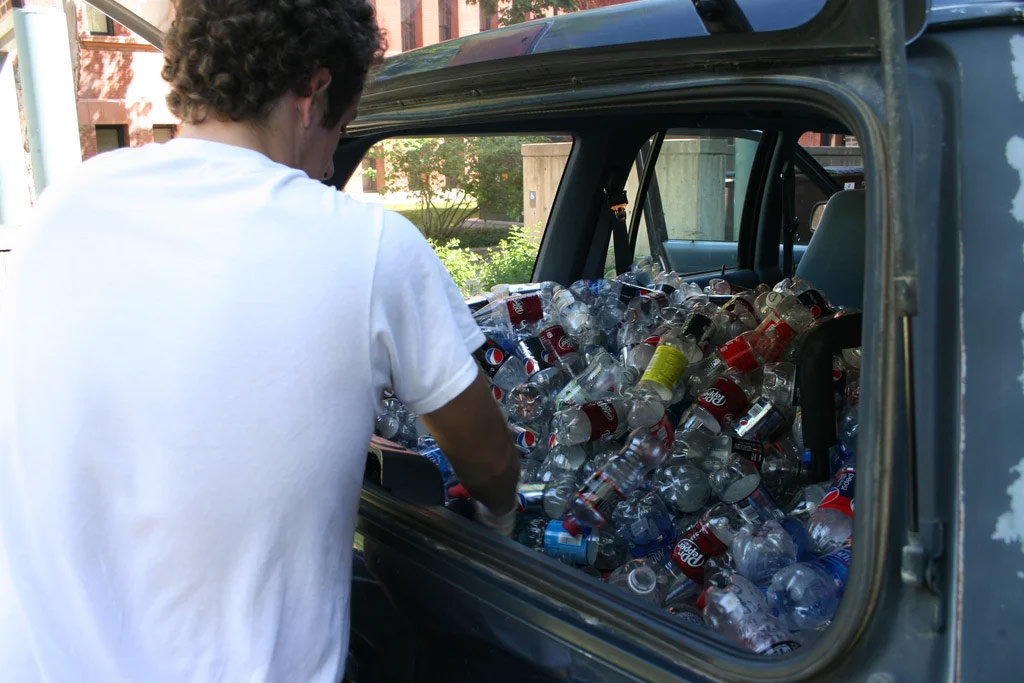
Collecting all of the bottles was the first major hurdle in this step. I worked with the campus recycling program at the University of Nebraska to get them. Volunteers then cut the labels off of each bottle, then we sanitized them by first dumping out all contents, and finally rinsing with a mixture of water and bleach. We rinsed each bottle before rinsing again in plain water.
The structure was made from 2×6 timber for the top frame measuring 8′ by 12′ by 8′ high. The columns were made by 4″x4″ wood assembled with wood screws. Diagonal reinforcements were added at the corners and metal brackets were added at the corners for added structural stability. We found some scrap wood to add additional reinforcements to the corners of the frame.
We painted the frame white using paint suitable for outdoor conditions.
-These images were taken later in the process however they best demonstrate the construction of the frame.
Step 5: String Grid
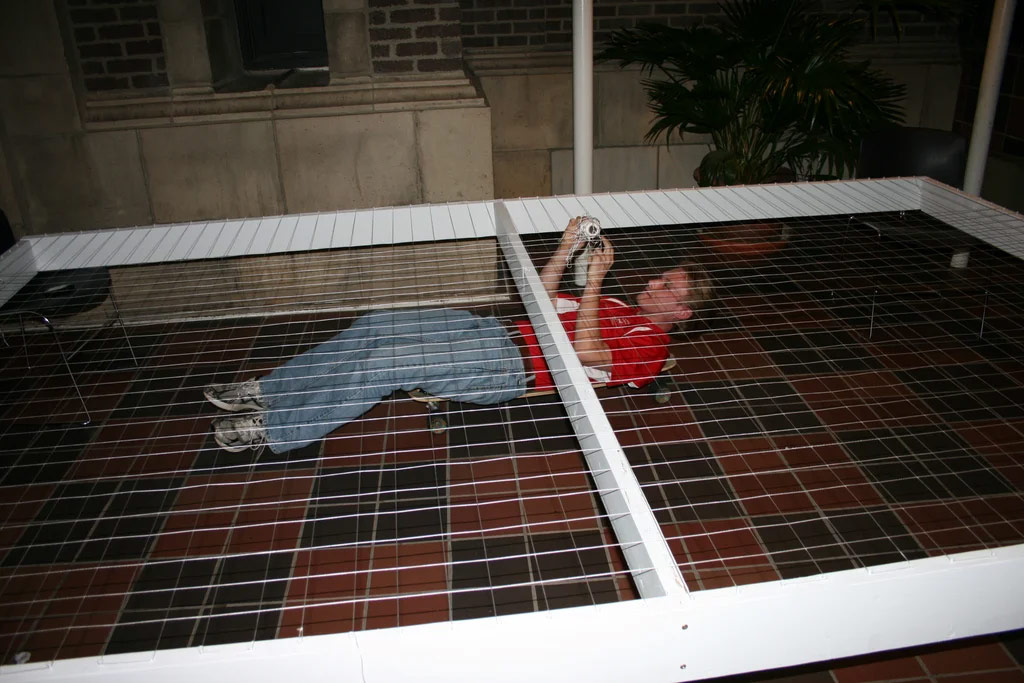
We added screws to the top of the structure at 3″ on center (about the diameter of a 20 ounce soda bottle) along the entire length of the wood. Using 17 lb. masons line, we wove a grid around the screws weaving the string above and below the crossing grid. A longboard worked well to roll underneath the frame to weave the string.
Step 6: Cap Preparation
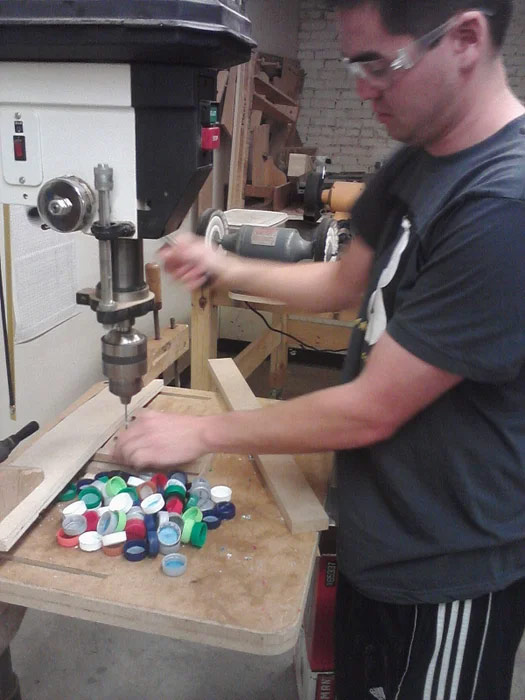
Each cap needed to be drilled with a hole so the string could easily fit through, but not large enough for the washer tied to the end of the string would also come through.
We used a drill press with a 1/8″ bit to drill the holes.
Step 7: Attaching Strings to Grid
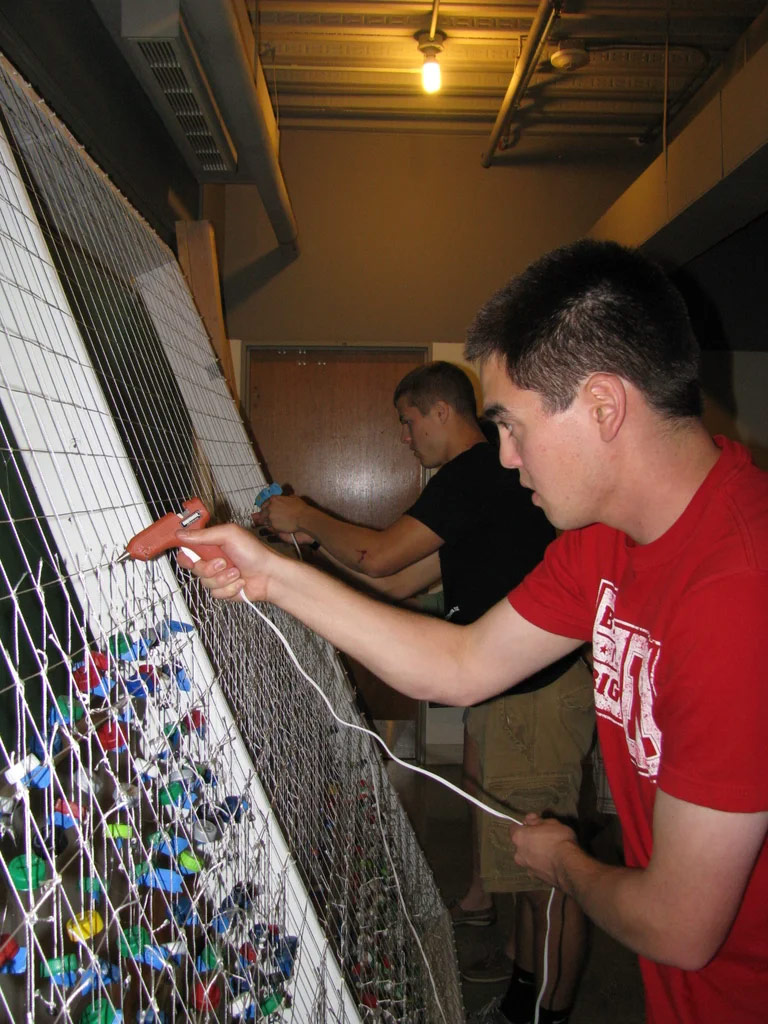
With all 1,581 strings cut and labeled according to the coordinate system, the strings can be glued and tied to the grid. We used a combination of first tying the string to the intersection of the corresponding strings according to the label on each individual string, and then applying hot glue to strengthen the knot.
Step 8: Attach Bottles to Frame
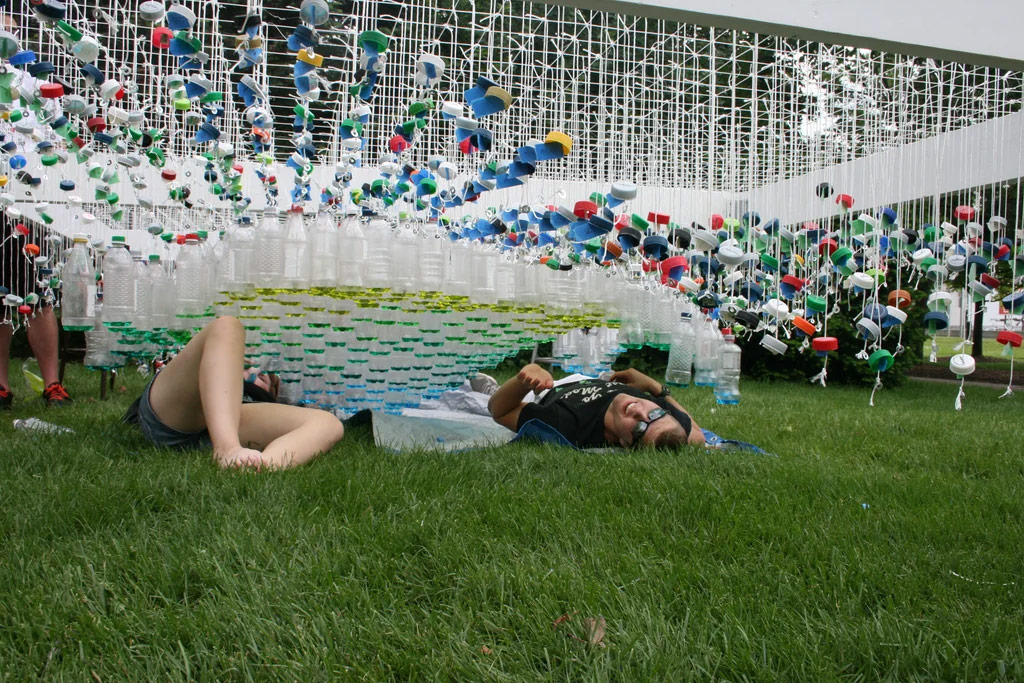
This step took 8 people several hours to complete. We attached bottles with a specific color of liquid in each bottle to a string with a corresponding label. Each bottle was filled with as little liquid as possible so as to minimize weight and to give the appearance of a flower pedal at the bottom of the bottle.
Step 9: Moving It!
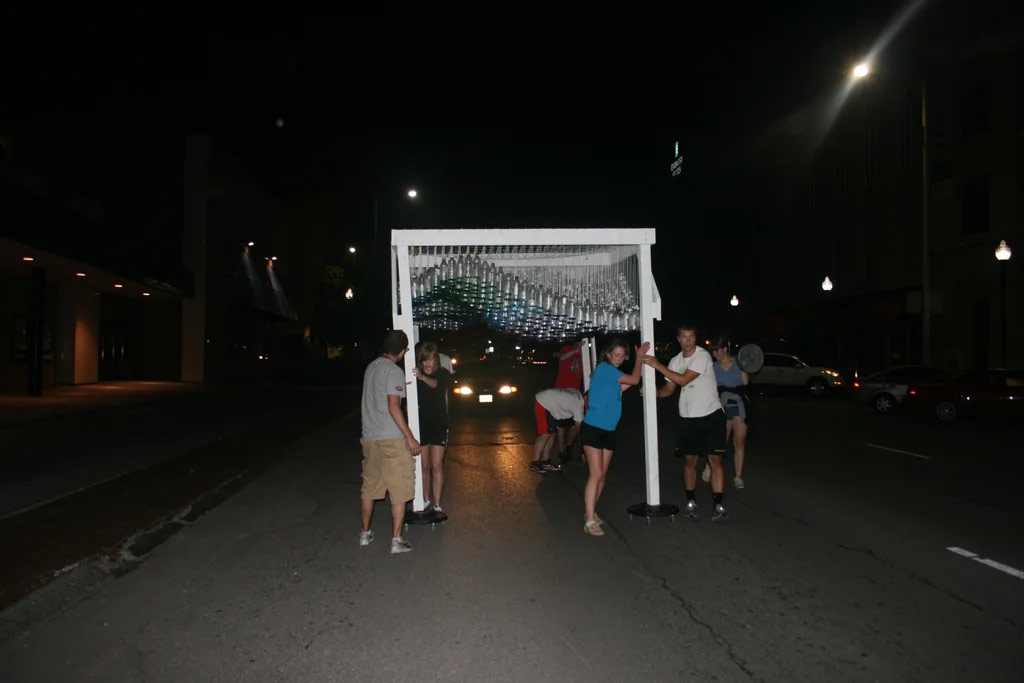
Good luck with this one! We removed the bottoms of trash cans that had wheels on them and set the four columns on top. We moved it to downtown Lincoln, Nebraska at 5:45 a.m.
Step 10: Public Display
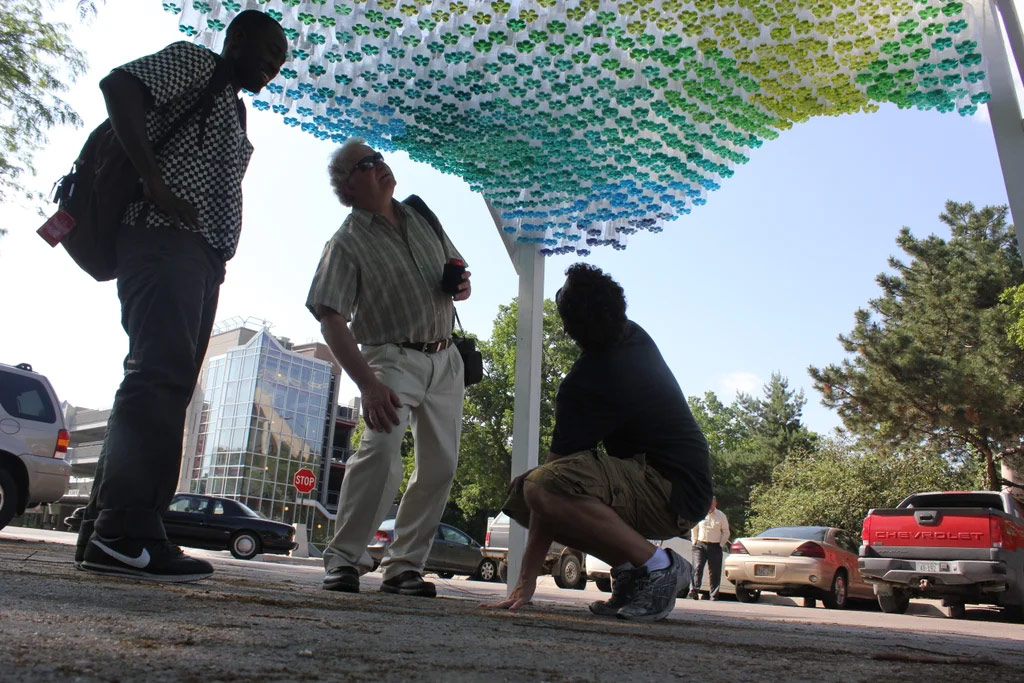
The structure was on display at a number of locations around Lincoln, Nebraska.
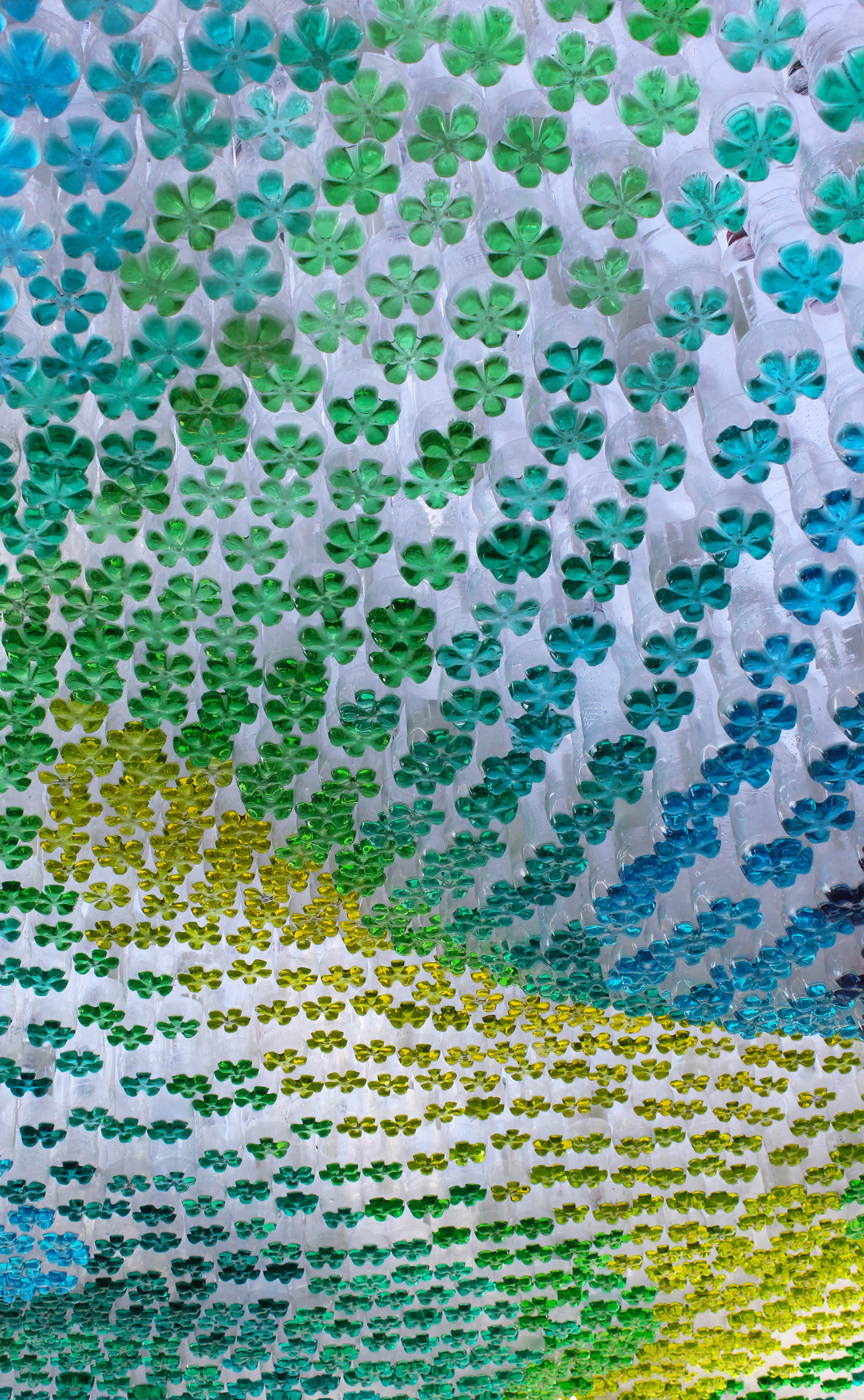
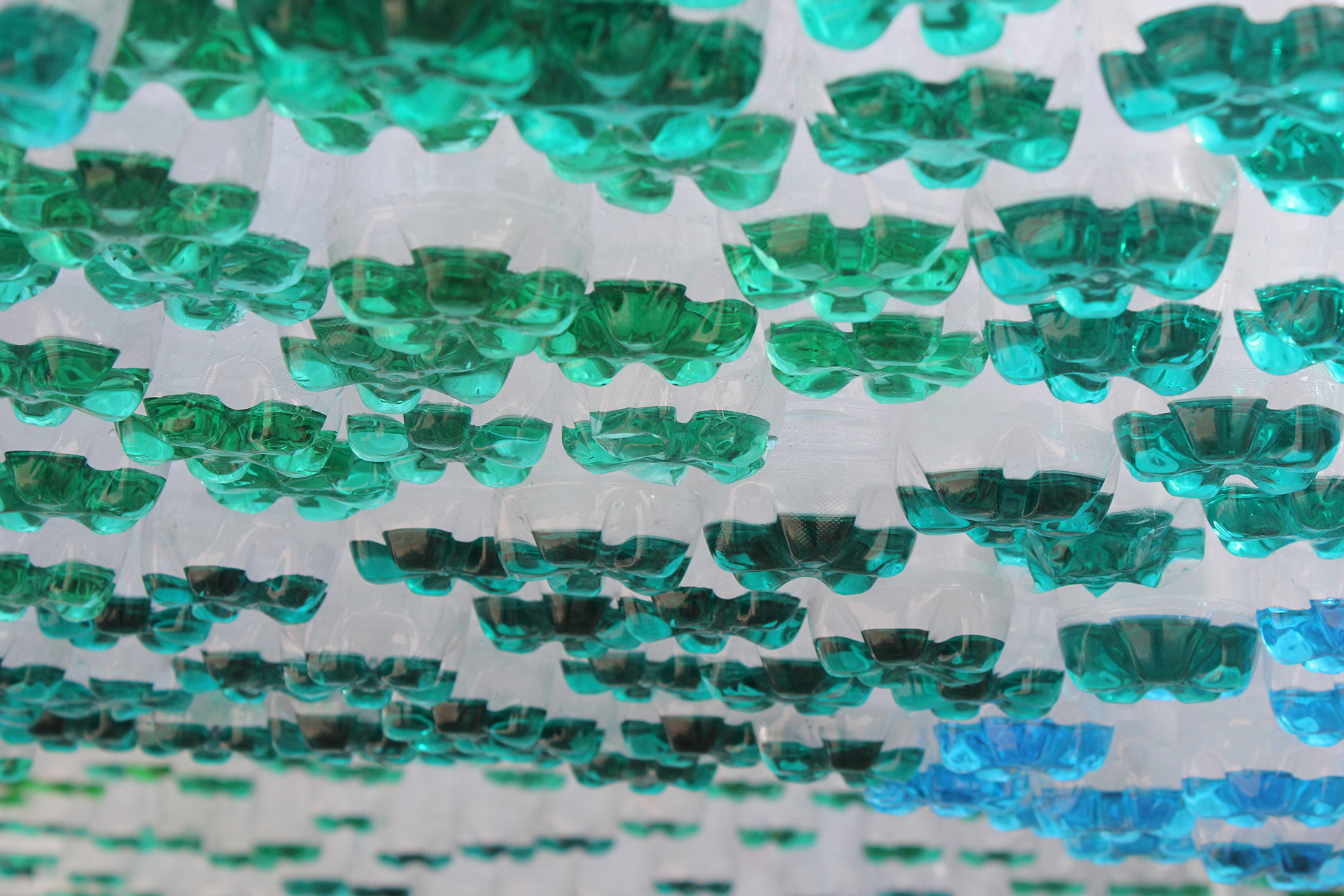
Garth Britzman, US

PROFILE
Garth Britzman is a designer and maker of things and spaces that awe, inspire, and delight. He develops novel uses for ordinary materials, upcycling them into aggregated objects that encourage discourse on sustainability, lifestyle, and fashion.
A conservationist and environmentalist, Britzman is dedicated to preserving the expansive qualities of our natural environment while embracing thoughtful urbanization and consumer attitudes. Recycling and reuse become paramount in establishing these advantageous behaviors. His artwork allows for these ideas to be tested and celebrated.
Main Research Source
- (POP)culture(2012)
- (POP)culture Instructable
- (POP)culture Construction Time-Lapse(20/12/2012)

